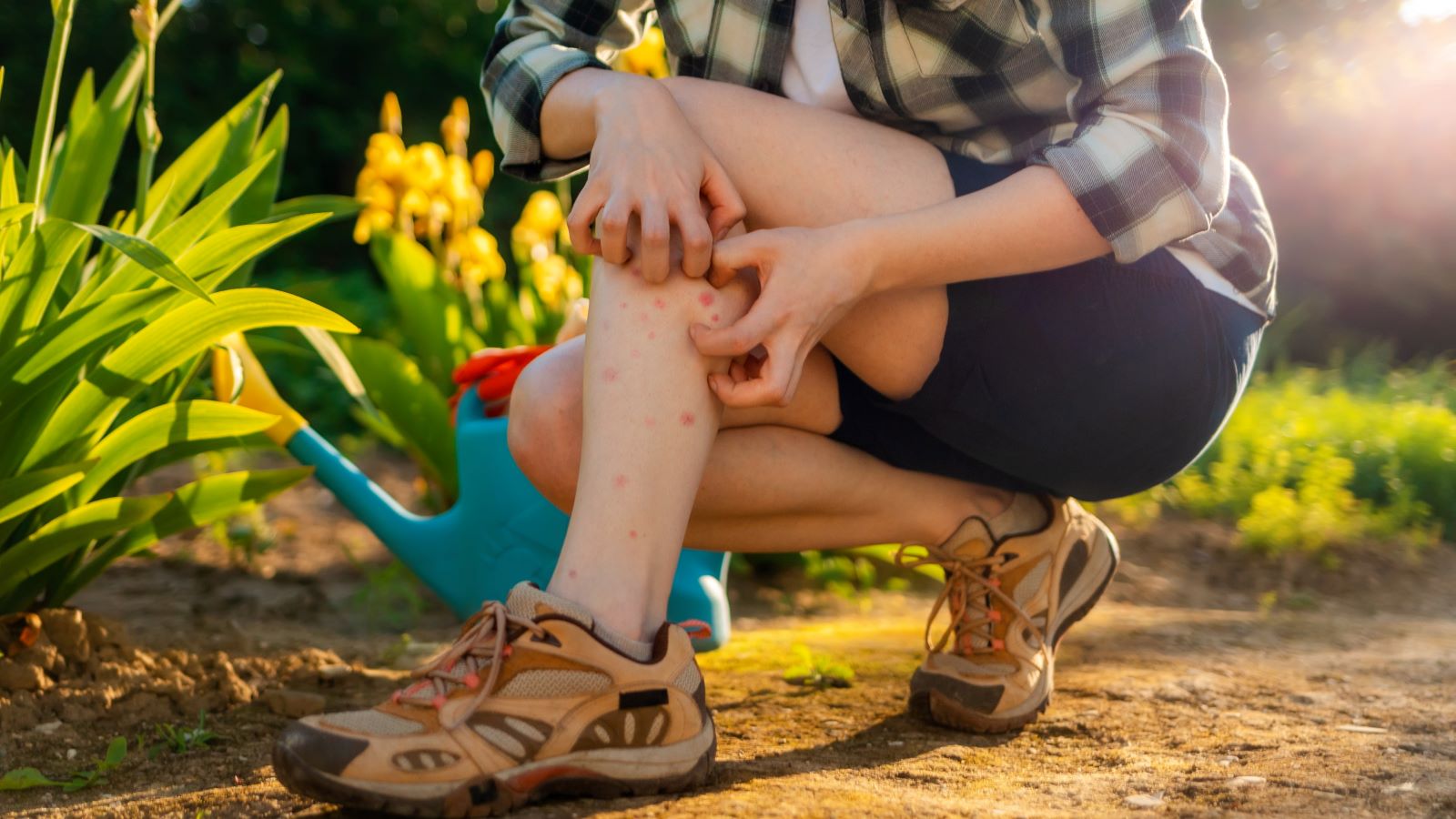<< Back
4 Skin Rashes to Watch Out for This Summer

July 16, 2025
Long days, warm nights and time outside – that’s what summer is all about. But more time outdoors also means a higher chance of itchy, uncomfortable skin rashes.
We asked Syed Hussain, medical director at Hartford HealthCare Urgent Care, what to watch for – and when it’s time to see a doctor.
1. Poison ivy, oak and sumac
Spending time in the woods or working in your yard? Watch out for these common plants. The rash appears as red, itchy patches or blisters where your skin came in contact with the plant’s oil.
“These are among the most common rashes we see in the summer,” says Dr. Hussain. “Even brushing against a leaf can cause a reaction.”
If you think you’ve come into contact with one of these plants, wash the area with soap and water right away. Over-the-counter remedies like hydrocortisone or calamine lotion can help relieve itching and discomfort.
2. Insect and mosquito bites
Bugs are more than just a nuisance. For some people, bites can cause a rash, swelling or even an allergic reaction.
“Insect and mosquito bites are common in the summer,” says Dr. Hussain. “They can be itchy and uncomfortable, and some can even become infected if scratched too much.”
To reduce your risk, use insect repellent and wear long sleeves when possible. If you do get bitten, antihistamines or anti-itch creams can help manage the symptoms.
> Related: How to Relieve – And Prevent – Mosquito Bites
3. Lyme disease
Spending time in grassy or wooded areas puts you at risk for tick bites – and Lyme disease. A telltale sign is a red, expanding rash that may look like a bull’s-eye.
“Occasionally, we see Lyme rashes, especially in people who are outdoors a lot,” Dr. Hussain says. However, it’s important to know that Lyme disease can still occur even without a rash.
This is one of the more serious summer skin rashes to watch out for. If you spot a tick, remove it as soon as possible. And if you develop a rash, fever or fatigue afterward, call your doctor — early treatment is key.
> Want more health news? Text StartHere to 85209 to sign up for text alerts
4. Heat rash and sun-related irritation
Excess heat, sweating and sun exposure can trigger rashes too – especially under tight clothing or in skin folds.
“We also see rashes caused by sun and heat,” says Dr. Hussain. “Sunscreen, sweat and even synthetic clothing can all irritate the skin.”
Heat and sun exposure are two of the biggest drivers of summer skin rashes, especially on hot, humid days. Stay cool, wear breathable fabrics, and rinse off sweat when possible to prevent irritation.
> Related: When to Worry About Heat Rash
When to see a doctor
Most summer rashes go away on their own or with home treatment. But if the rash is spreading, comes with a fever, or changes in shape or size, it could be a sign of something more serious.
“If the rash is limited to one area and gets better with Benadryl or cortisone, it’s probably just irritation,” Dr. Hussain says. “But if it’s progressing or you have other symptoms, it’s time to get it checked out.”